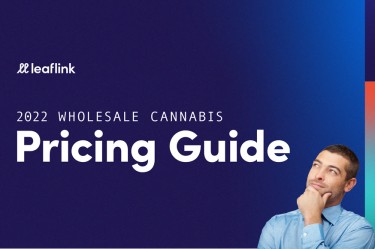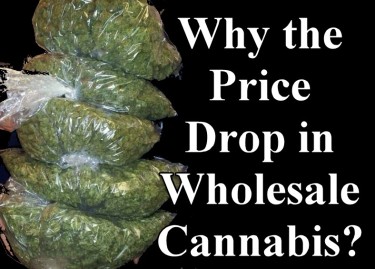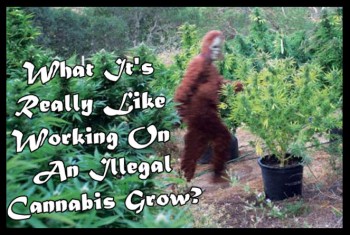
LeafLink Publishes Their Wholesale Cannabis Pricing Guide: Here are the Top Takeaways!
For LeafLink’s Wholesale Cannabis Pricing Guide 2022, the company analyzed pricing data across 10 major US cannabis markets to help brands and retailers understand how 5 different product categories are priced. The report is intended to help brands and retailers buy and sell wholesale cannabis inventory at the right price for their business, and it’s proven to be an invaluable tool for the industry at large.
No one else in the industry can provide first-party pricing data at this scale (over 42% of all wholesale cannabis transaction volume occurs on the platform). As such, LeafLink is uniquely positioned to share 2021’s average wholesale pricing for 5 major product categories, along with key insights into how pricing can impact sales performance and year-over-year changes to pricing that show longer-term trends impacting the industry.
Now that we’ve shared why LeafLink is the ideal resource for accurate wholesale cannabis pricing data, let’s get into some key takeaways from the 2022 edition of the Wholesale Cannabis Pricing Guide. For the full report, you’ll have to download your copy from LeafLink.
So how did 2021 wholesale pricing compare to 2020?
Overall, wholesale cannabis pricing declined in 2021 – but there are certainly exceptions by market and/or category. Given the larger economic trends around inflation in the United States, this may come as a surprise, but cannabis pricing was affected by several unique factors over last year.
First, new cultivators, producers, and sellers entered the market in 2021 anticipating more price growth like in 2020 (Flower pricing was up by 18% for the year.) This put downward pressure on pricing, driving them down as supply and demand shifted.
Cultivators also began investing more in technology to increase efficiency. This was a response to increased competition, but also so they could withstand variations in climate. As a result, there were higher production levels and higher supply throughout the year.
While it’s clear that legal cannabis is growing, it’s impossible to ignore the elephant in the room; the ever-prevalent illicit cannabis market. The illicit market’s expansion has taken market share from the regulated markets, and this has put additional downward pressure on prices in 2021.
“The illicit market continued to grow in 2021, and of course in 2020. So, there was a big flower correction, especially on the West Coast, as a result of...a big yield in 2020, continued growth in the illicit market, and many more entrances,” Alex Feldman, General Manager of Insights & Marketing Services at LeafLink said.
Price shifts for different categories
Digging deeper into the categories, there are some interesting trends. Flower prices declined by around 6% compared to 2020 across the 10 markets in the guide. Oklahoma and Michigan saw the most dramatic decreases by far at -28% and -22% respectively. But not all markets showed a decline in pricing – Colorado flower was up 7% and Arizona 5% on average.
“What happens in newer states, when you think of Massachusetts, Michigan, or Oklahoma, whenever a market expands or recently turns to allow adult use, is a clamoring of new entrances,” Feldman continued. “So in 2020 in Michigan, you actually had significant shortages, and then prices were high, which led to new entrances, and therefore now you have more supplies, and there’s this drastic decrease in flower prices in Michigan. A very similar dynamic happened in Oklahoma in 2021, that led to very drastic price declines in those markets.”
“We see this play out in many new markets, where as you have very attractive prices, and there are shortages, new suppliers, new cultivators come in, and they see the prices as attractive. Unless you’re in a limited license state, an over-reaction occurs, and then the following year, which would be 2021, you have too much supply, too much cultivation, and that results in a drastic reduction in price.”
Cartridges were the only category that showed increased average pricing across the 10 markets, While average prices for cartridges only increased by 6%, which is an outlier when compared to the other product categories. And this doesn’t mean that prices increased in every state either (Michigan cartridge prices were down 17% year-over-year.) Arizona led the growth, increasing by 8% vs. 2020.
When it comes to concentrates, pricing was fairly steady at a 3% decline for the year. Oddly enough, most markets saw higher prices for concentrates but large decreases of -27% and -16% for Oklahoma and Michigan brought the average down significantly. Alaska, Arizona, Colorado, Massachusetts, Oregon, and Nevada each saw small single-digit increases in average prices for concentrates.
Edibles & Ingestibles was one of the more consistent categories when it comes to pricing – consistently showing declining prices, at least. The average price of Edibles & Ingestibles dropped by 7% from the previous year, with nine out of the ten markets showing declines. Arizona was the lone holdout, increasing by 4% year-over-year.
LeafLink analyzed a new category this year, beverages. They’ve developed into a major product category over the past year, but still aligned with our categories as a whole with an average decrease of 6% from 2020. Beverage prices did increase in Colorado and Arizona (by 5% and 3% respectively), but California, Michigan, Nevada, and Washington all saw lower pricing on average than the previous year.
Pre-Rolls are the final category that LeafLink analyzed for the report. While Alaska, Massachusstts, and Washington all experienced single-digit increases in average pricing, Oregon saw the largest decline with Pre-Roll pricing declining by 15%.
When considering pricing, it’s important to note that pricing for a category can and does affect other categories. None of these factors exist in isolation, and Feldman touched on this aspect as well.
“I think there’s some more research to be done…to actually quantify what that correlation [between pricing for different product categories] is. But because bulk flower is an input to so many other products that are produced as derivatives, there is that correlation.”
For the full report, you’ll have to download your copy from LeafLink.
WHOLESALE CANANBIS PRICING MOVES, READ MORE...
WHOLESALE MARIJUANA PRICES STABLIZE, ARE WE SEEING AN EFFICIENT MARKET?
OR..
WHOLESALE CANNABIS PRICES GET ROCKED, NOW WHAT?








.jpg?width=350)